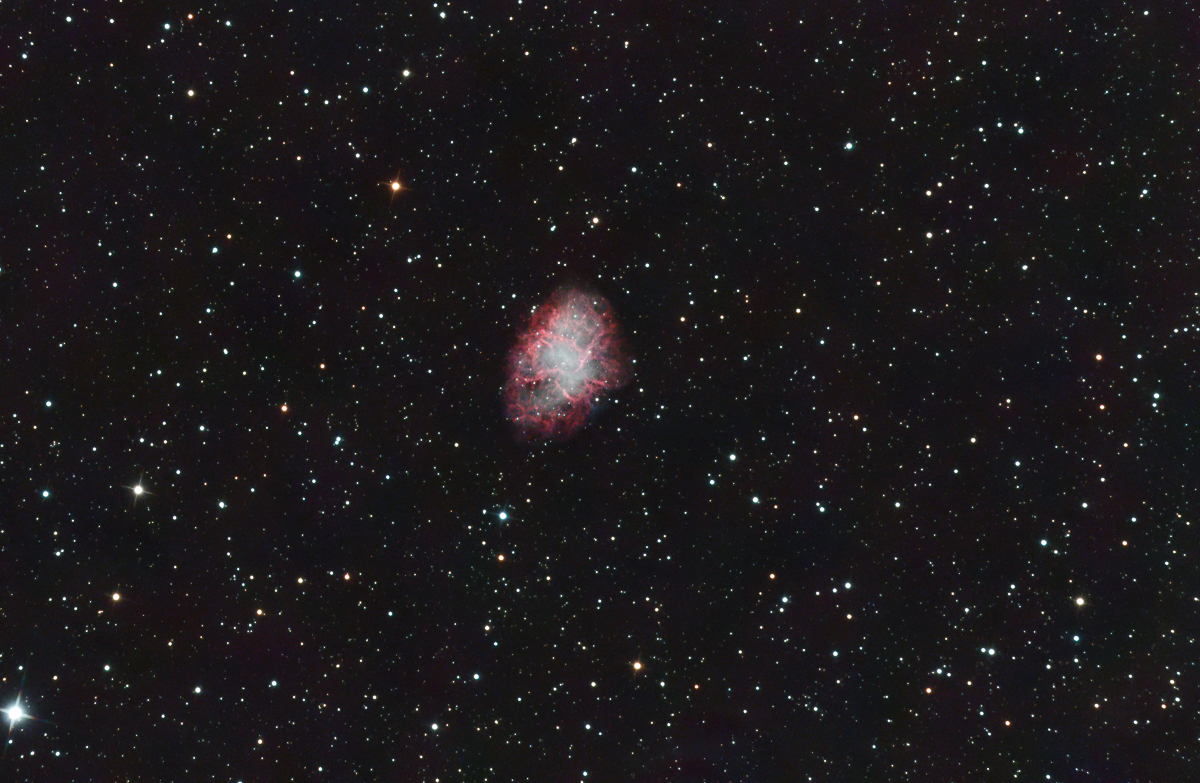Vinter 2023
Januari - april 2023
I slutet av 2022 köpte jag ännu ett teleskop med lång brännvidd, så det blev mycket djuprymdsfoton under början av 2023. Sedan hade vi ju också flera roliga besök av våra numera fem barnbarn.
M1, Crab nebula

The Crab Nebula, NGC 1952 or M1 is an expanding cloud of gas that forms the remnants of a supernova seen on July 4, 1054. It is now more than 6 light years in diameter and is still expanding at over 1,000 km/s (originally it was 10 000 km/s).
The original star was slightly larger than the Sun and the total mass of gas and matter ejected in the explosion was about 10% of the Sun's mass.
The supernova was initially bright enough to be seen in daylight without aids. The Crab Nebula is located at a distance of about 6,500 light years in the constellation Taurus.
The centrally located remnant star, the Crab Pulsar, is a neutron star with a diameter of about 10 kilometers and about the same mass as the Sun. It is what was left when the original star exploded and the remnants collapsed, and rotates one revolution in 33 milliseconds, that is, about 30 revolutions per second, and the cones of light and particles it emits from the poles interact with the gas of the nebula, causing a complex pattern of stellar wind and fluorescence. The beams of particles cause an electromagnetic shock wave whose shape and position varies as they sweep over different parts of the surrounding gas cloud. Even in the equatorial plane, the wind of particles gives rise to an annular cloud veil of matter that moves out into the surrounding nebula.
The Crab Nebula emits so-called synchrotron radiation over a large frequency range, from radio wavelengths to X-ray and gamma wavelengths. It is a very strong source of X-rays. The radiation of the nebula, its spectrum and the period of the pulsar are known and fixed and are often used to calibrate instruments in X-ray astronomy.
Photographed with RC8" reflector telescope and ASI 2600MC color camera in Stuvsta, January 2023. Exposure was 48*3min with IDAS LPS D2 light pollution filter.